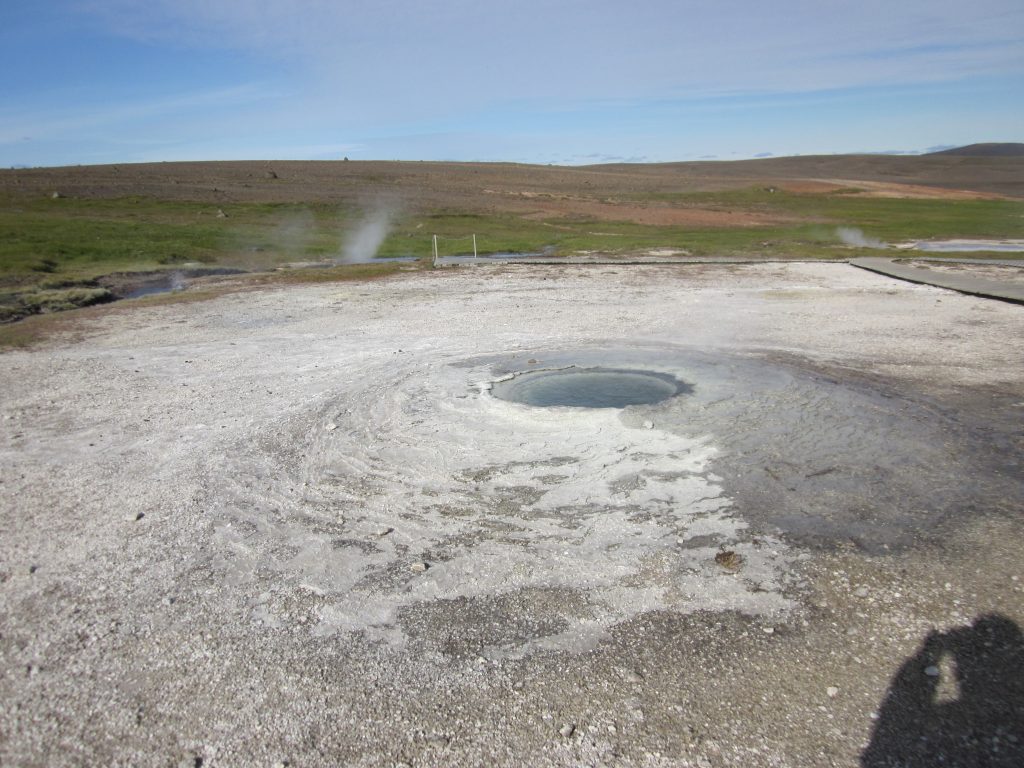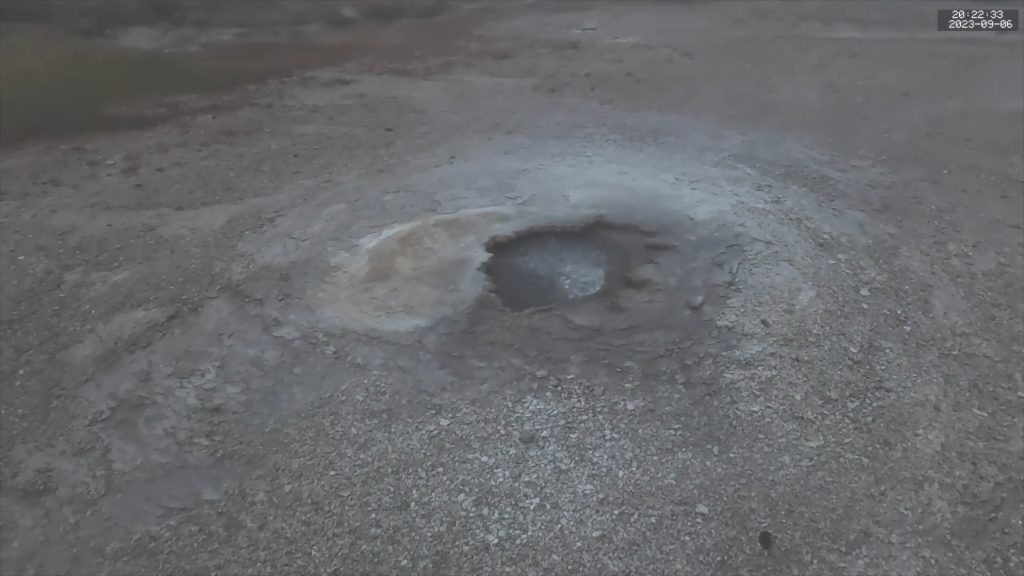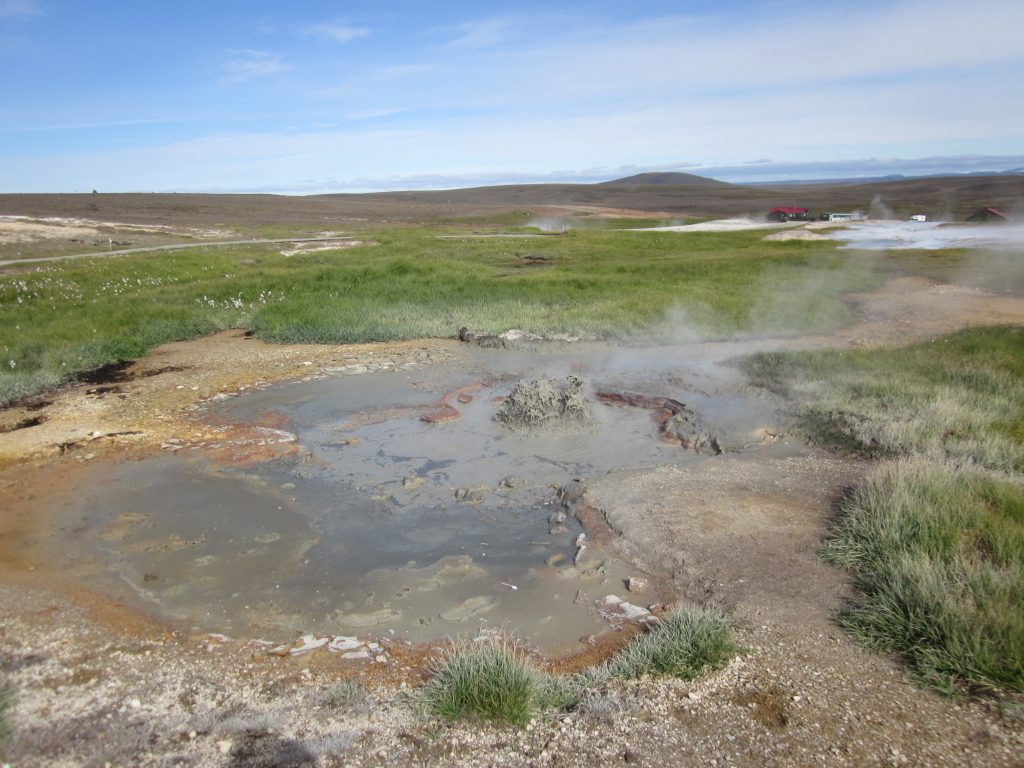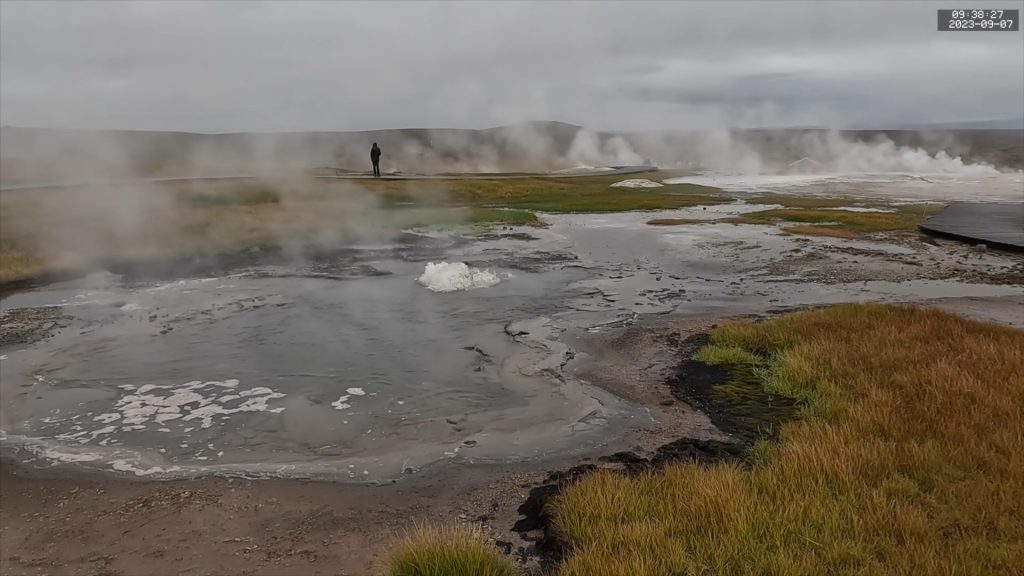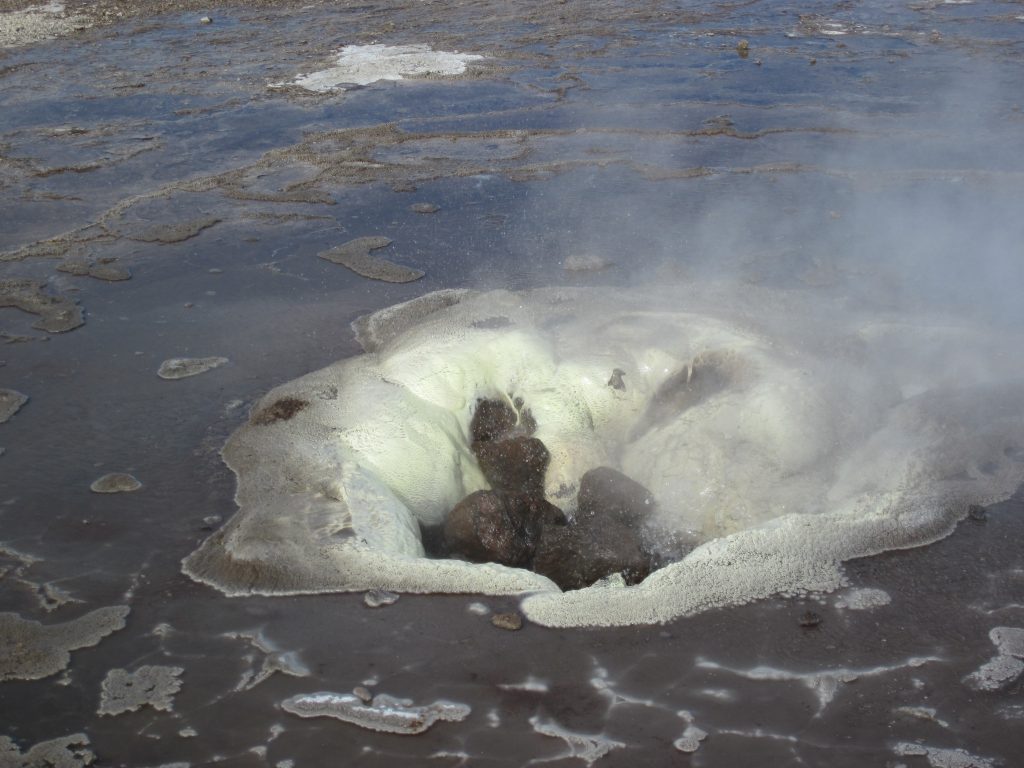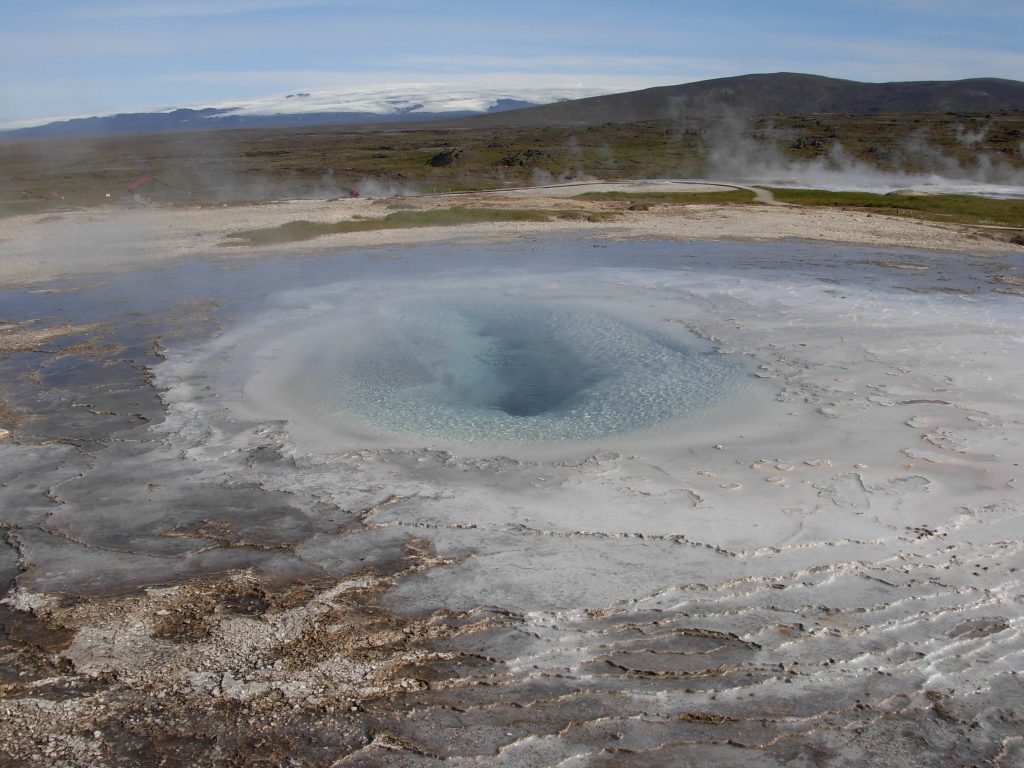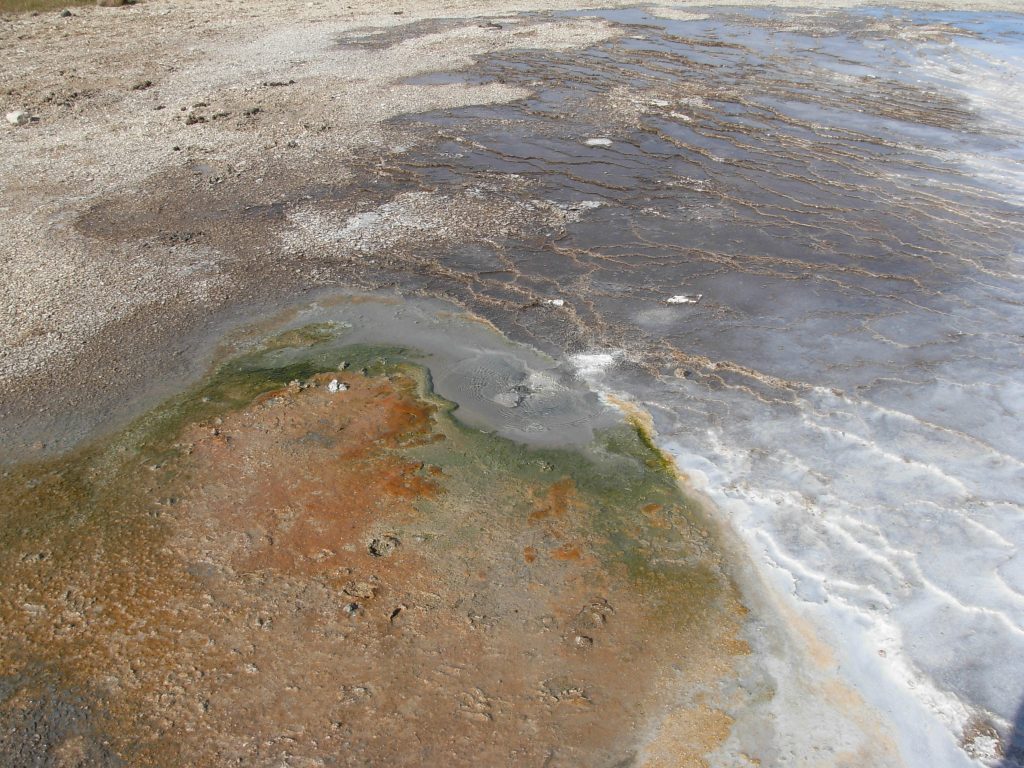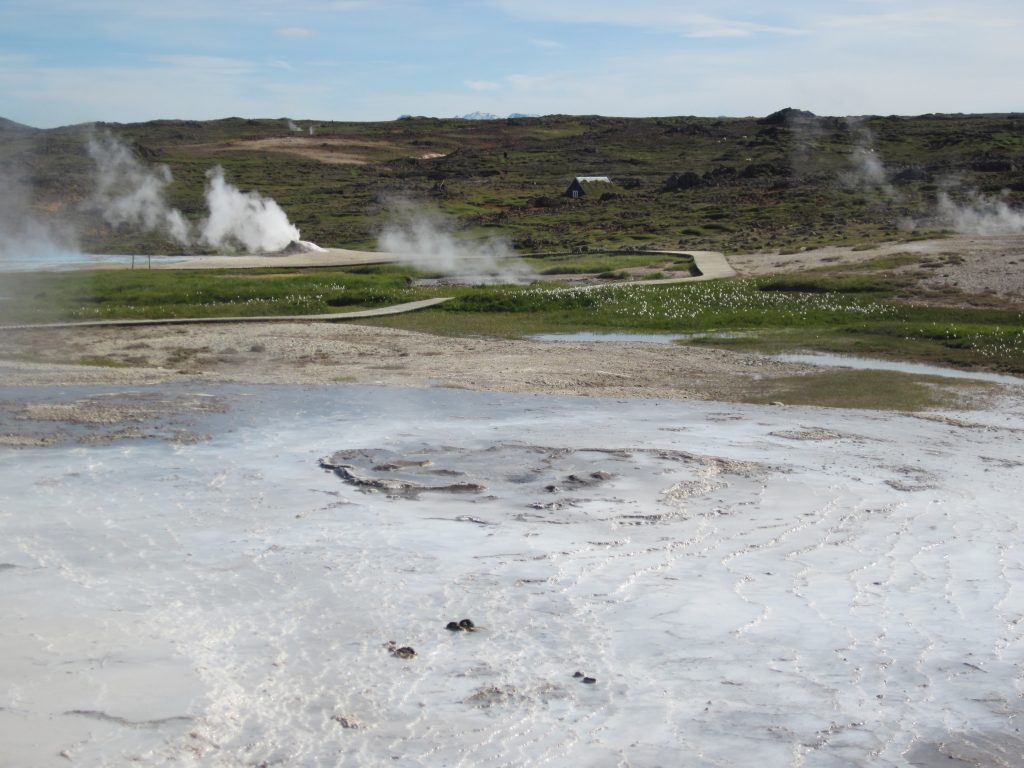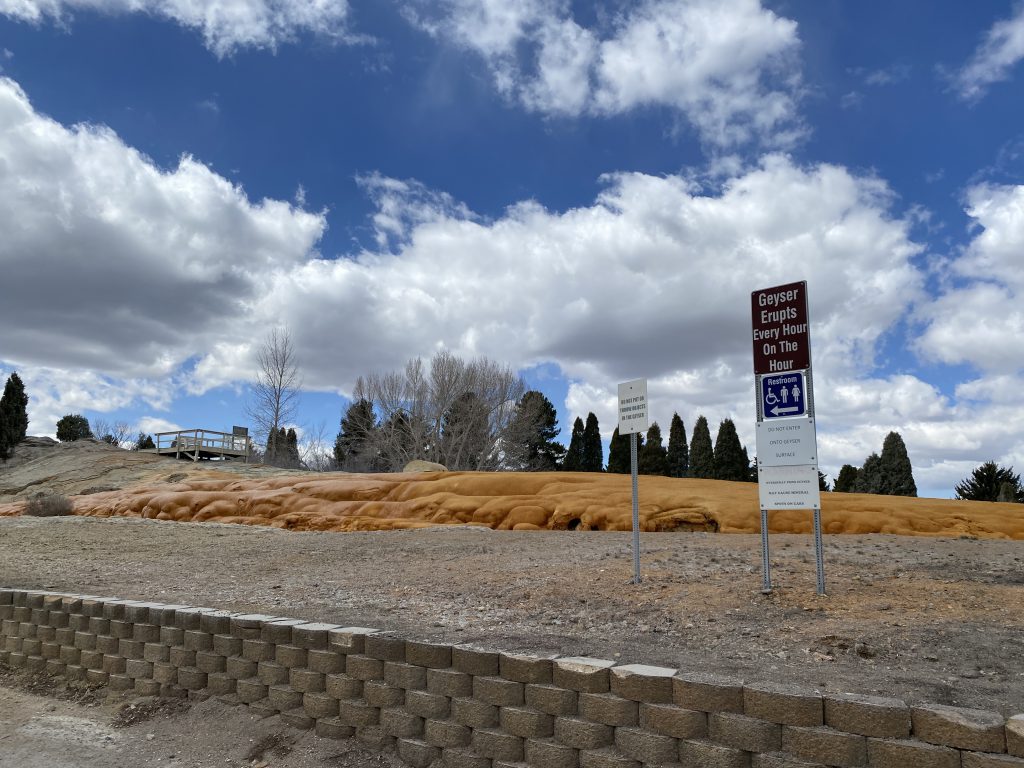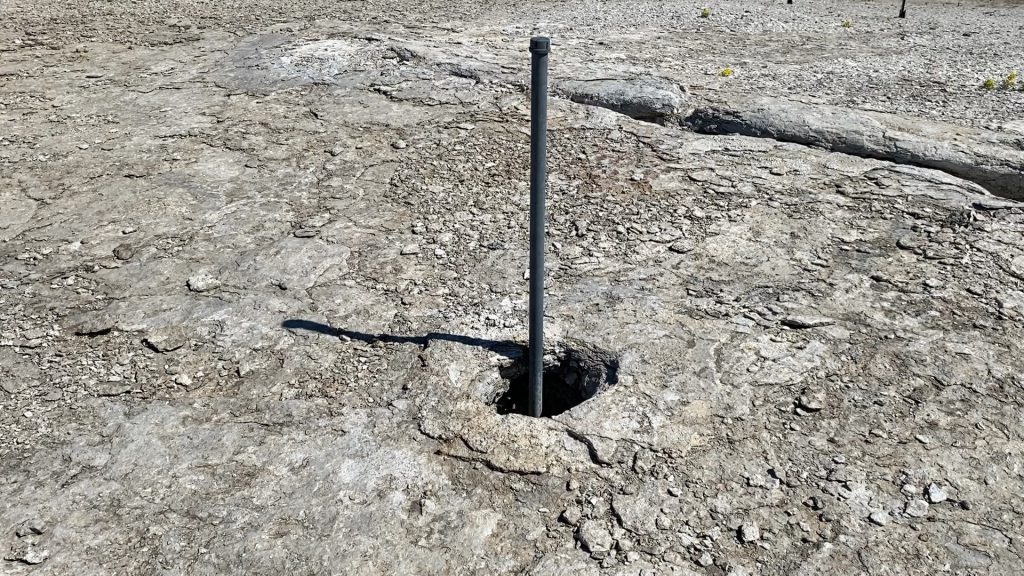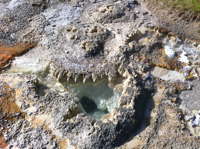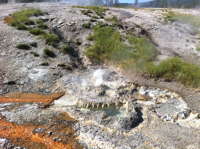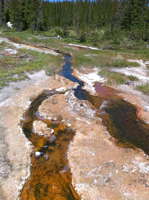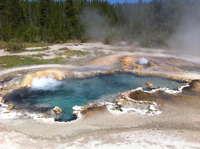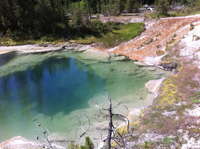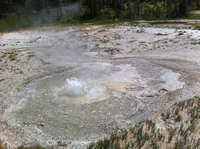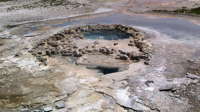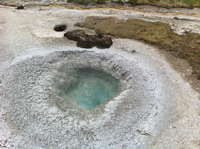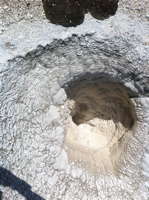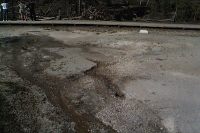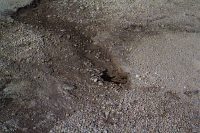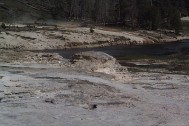Spent the day on a trip to the Shoshone Geyser Basin. Haven't been there in ten years, so good to be back. Was with a small party of gazers, who left at various times in the morning, with various levels of experience there.
I met the other in my party, Suzanne Strasser, at the Lower Ham's store, where we got to witness the dawn eruption of Beehive at 05:08. A nice little sendoff. From there it was drive the bikes to the trailhead at Kepler Falls and bike in to Lone Star Geyser. Thanks to a rainstorm the previous night, there were still lots of puddle along the way, but only a couple which spanned the width of the trail. From a visit by some others the previous day, I knew that the odds of seeing a eruption was low, so we didn't hang around, but headed right out at 05:50.
The trail is not in the best of shape. We encountered seven downed trees, one quagmire and two missing bridges. One, which is the final bridge across the head of Shoshone Creek, disappeared years ago. Now missing is the bridge prior to that, about 100 yards apart. So on the way in, we got to take off our shoes and socks twice in quick succession and that water is cold.
It was also earlier that I've usually gone back there in the past (usually mid- to late-August, so there was a lot more greenery down next to the trail. So despite dry creek crossings, my pantlegs were still wet almost to the knee. The wildflowers were much better than I remember, and Suzanne even found strawberries along the way (About the size of a small peanut, but tasty.)

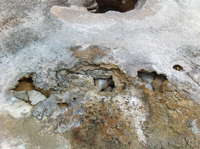
Collapse feature near Little Giant, morning and afternoon
We finally entered the basin shortly before 09:00, with our first stop a quick jaunt over to see Double and Little Giant. Both were sloshing about quite a bit, but what quickly caught our attention was the feature to the west of Little Giant. I do not remember what it looked like before, but today it was long, fairly narrow collapse in the sinter. And that sinter was visibly bouncing. As water came up from underneath, it pushed at the slabs in the vent, moving them only a fraction of an inch or so. In a couple of cases it appeared that the slab was still attached, as no hinge crack could be seen, while the overhang danced up and down. This is apparently new activity, not seen by any of our party before, and I sorry to say I don't expect to see it should I ever visit again.
So from that it was south along the creek to Soap Kettle and Triple Bulger. Soap Kettle still shows no signs of any discharge, although it was sloshing around in its bowl. The back blowout vent of Triple Bulger old splash to a foot or so.
Shield and Gourd were both active, while Minute Man was still about an hour or so away from its next cycle. #11 seemed inactive, as the cone, other than a trickle matching the incoming Shield runoff, was dry. A good place to have breakfast.
When I first looked at Five Crater, it was active as I've always seen it, with an eruption of sorts consisting of water slapping the the top of the perforated shelf containing the vents, causing water to squirt through. By that time the other party was arriving, so we waited for them to catch up to us, and then we joined them as they looked those features. This time Five Crater was actually erupting, with water being forced by steam through the vents.
Next was to visit the Orion Group, where nothing much was erupting. Union Geyser even has a small, foot high tree growing on the platform beside the southern vent.
A few of us waded across the creek, while others decided to risk the fallen trees a bit farther south. While they were catching up to us, I took the time to deconstruct some hot-potter engineering, scattering rocks and setting some wood downstream.
Next up we walked through the trees and approached the Western Group. First we enchanted the sluiceway from Boiling Cauldron, which seemed longer and more extensive than I remembered. It is in turned fed by the ornately lined runoff channel from Boiling Cauldron, and includes a number of small spits.
Boiling Cauldron itself seemed unchanged, just as noisy and colorful as always. Nearby is Cream Spring, where are visible the bones of a bison that went down the steep sides and into the spring.
Following that we spent most of the rest of our time in the North Group, watching and waiting for the numerous geysers there. It was also time for lunch, and to continue Shoshone lunchtime traditions.
As we entered the group, we saw an eruption of Lion Geyser. I'd earlier seen it erupt from the other side of the creek, so we had a double (or single?) eruption interval just under two hours. The interval turned out to be double, and we saw it right on time. It still sends out that little squirtgun droplet over twenty feet from the vent.
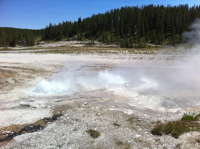
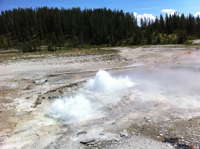
Velvet Geyser, in eruption
Velvet Geyser was also active. I didn't take any timing notes, but the eruptions came quite regularly every 10 to 11 minutes or so. We did see one minor eruption, which a few minutes later was followed by one of the larger eruptions we saw, one that several times pushed water out to top of the levee of gravel it has built around itself.
We had lunch in the insufficient and moving shade near Hydra Geyser. While the water levels were high, we didn't see any activity. Across the creek, Minute Man was having a series, but I didn't want to wade across the creek any more, so watched it from there.
Bead Geyser was also active, and we saw two eruptions about 2 hours apart. Nearby Knobby geyser seemed inactive, only putting out a trickle of water.
Terracette Spring is located next to Bead, and show that there is a connection between the two. An eruption of Bead drains Terracette completely, only to have it fill back up within a few minutes.
Frill Spring did not erupt for us, but it sure did try. We watched it for a good 20 minutes have splashing a good 1/2 meter high which on occasion seemed to sudden surge up to a meter, and in about any other geyser, would have signaled the push that starts the eruption. But it would die down, only to try a few minutes later.
By that then, it was time to leave. It would be a while for Bead, or the next Minute Man series, Hydra wasn't promising, and Frill would be a while also. So waded across the creek below Minute Man and headed back. We did stop at the collapse near Little Giant, where everything was quiet. In some ways the collapse was just as impressive still as moving. The temptation to touch had to be resisted, as it looked like it could just all fall apart if we'd done that, and it's better to let the geyser do that.
The bugs hadn't been bad in the basin, but as we got higher approaching the pass, they got worse. Mosquitoes buzzed everywhere, but the repellants seemed to be doing their job. I did discover that mosquitoes can drill through a couple of layers of clothes when the clothes are stretched tight. Several times I felt a tingle on my shoulder, looked over and made sure another one died.

